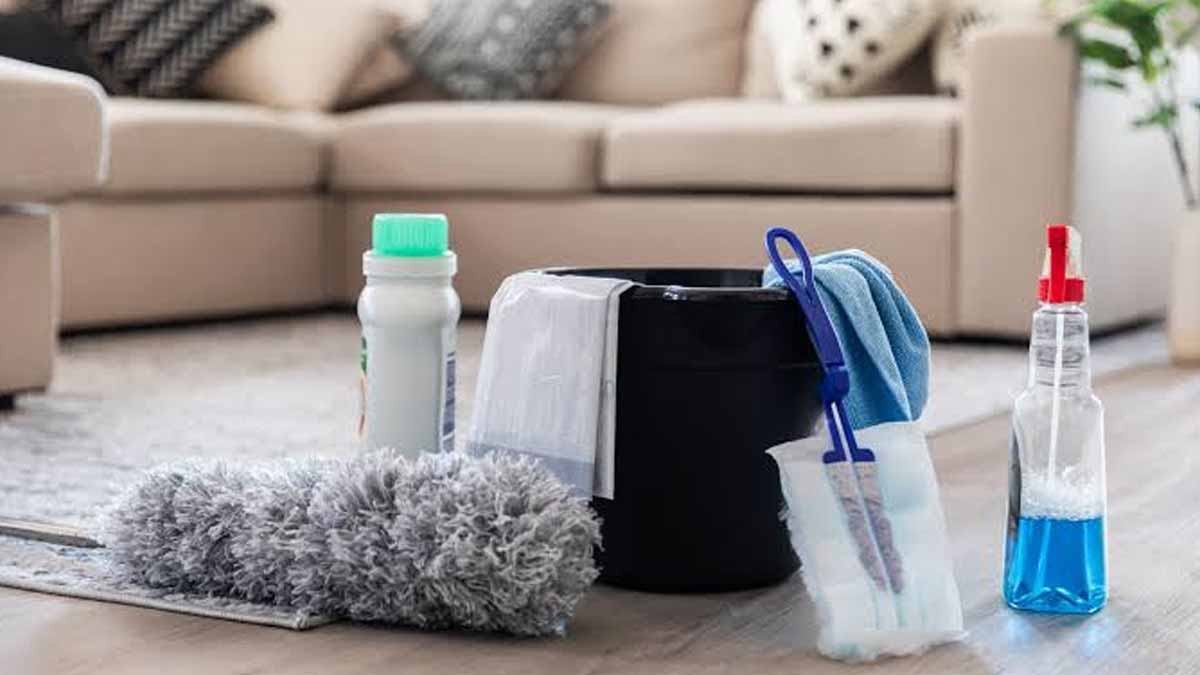Real sparkle starts when routine meets intention. Professional cleaners know that a tidy home is built on clear choices, not heroic marathons. They plan, pace, and protect their energy so results last. With deep cleaning treated as a rhythm, not a panic, each room gets precise care while stress stays low. Simple tools, smart sequences, and steady habits do the heavy lifting, and every pass builds on the last. The payoff is a calmer space that looks clean and lives even cleaner.
A two-phase plan that keeps momentum
Sandy Willis, who runs a Molly Maid franchise, swears by a two-phase plan because life moves fast while homes still need care. She blocks one intensive push, then supports it with weekly upkeep. This cadence protects energy and standards, and it also stops mess from growing into work that steals weekends.
She sets aside one focused weekend every four months for an all-out reset, and she plans it like a job. The date stays firm, so the house never drifts. That weekend clears grime, resets rooms, and sets a baseline that lasts. Because expectations stay clear, the work feels lighter.
Weekly rhythms keep that reset alive. Willis assigns one task per day—dusting, then vacuuming, then bathrooms—so nothing piles up. Micro-habits fit busy schedules and keep shine visible. The home holds its line because small steps happen on time. This is where deep cleaning stops feeling like a mountain and starts feeling routine.
Zoning turns deep cleaning into clear wins
Frequency matters, and Willis prefers a full-home reset every three to four months rather than every six. She breaks the home into zones or task groups, so attention stays sharp while fatigue stays low. Rooms get the care they deserve, and results feel tangible after each session.
She plans two weeks for the full cycle, with only a few hours each week. Kitchens, bathrooms, bedrooms, and living areas rotate while windows and storage ride along. Because the plan is staggered, motivation lasts. The schedule respects real life, and progress still shows up on time, even during busy seasons.
Zoning can follow tasks instead of rooms. One day goes to dusting high-to-low across the home, then another handles floors, then glass and mirrors. This switch reduces gear changes and trips, and it speeds the flow. The pattern works because deep cleaning thrives on consistency, not on marathon sessions that drain focus.
Health first, surfaces that matter most
Willis aims her energy where it helps most. Carpets and upholstery trap dust and allergens, so they get special attention. High-touch surfaces like handles and switches spread grime fast, so they get frequent care. The result looks clean and feels better because air and surfaces improve together with each pass.
She refuses to ignore low-glamour areas. Baseboards collect lint, while window treatments hold dust near light and airflow. Behind appliances, grease and grit hide until odors appear and crumbs invite pests. Because cleaning here prevents buildup, the home stays fresh longer, and big jobs shrink next time.
Family health guides each choice. A HEPA vacuum pulls fine particles, and a microfiber cloth lifts residue instead of pushing it around. Diluted disinfectant handles high-touch points after soil is removed, since order matters for safety and shine. With that sequence set, deep cleaning does more than sparkle; it also supports well-being.
Small goals that sustain deep cleaning habits
Even pros procrastinate, so Willis uses tiny goals to beat mental blocks. One room or one drawer still counts, as long as it finishes. She pairs each mini-win with a reward, and motivation returns fast. Because progress stays visible, the next step arrives sooner and feels easier.
Entertainment changes the mood while hands stay busy. Music sets tempo, and a podcast turns minutes into movement. She times tasks, then stops on schedule, so the mind anticipates closure instead of dread. Because the work has edges, it feels contained, and the house improves without stealing every spare hour.
She captures wins on a checklist that lives where supplies live. A marked box gives proof, and proof drives the next action. The list travels across zones and weeks, and streaks form. Then, when a weekend sprint arrives, the baseline is strong. That way deep cleaning never starts from zero again.
Pro tools, pro techniques, real results
Experience at work follows Willis home because process scales. Professional-grade products cut time and reduce passes. A quality degreaser breaks kitchen film, and an acidic cleaner lifts limescale. Microfiber traps dust, while a squeegee speeds glass. Because gear matters, results improve, and fatigue drops without extra effort.
She uses a HEPA vacuum with attachments for edges, vents, and upholstery. Extension poles reach fans and corners, and crevice tools clean tracks. The right tools make precision easy, and precision saves time later. When soil leaves the first time, maintenance stays quick, and shine holds longer between resets.
Technique decides outcomes. Work top-to-bottom so debris falls once, left-to-right so coverage stays even, and dry tasks before wet so streaks fade. She labels bottles, refreshes pads, and protects dwell time so chemistry can work. This simple discipline keeps quality high, and deep cleaning transforms from chore into craft.
Make progress today without losing your weekend
Choose a weekend on the calendar, then build a two-week zone plan and place health-first tasks near the top. Set micro-goals, add music, and reward each finish. Borrow one pro tool or technique this month, and add another next month. With those moves in place, deep cleaning stops looming and starts working for you.
